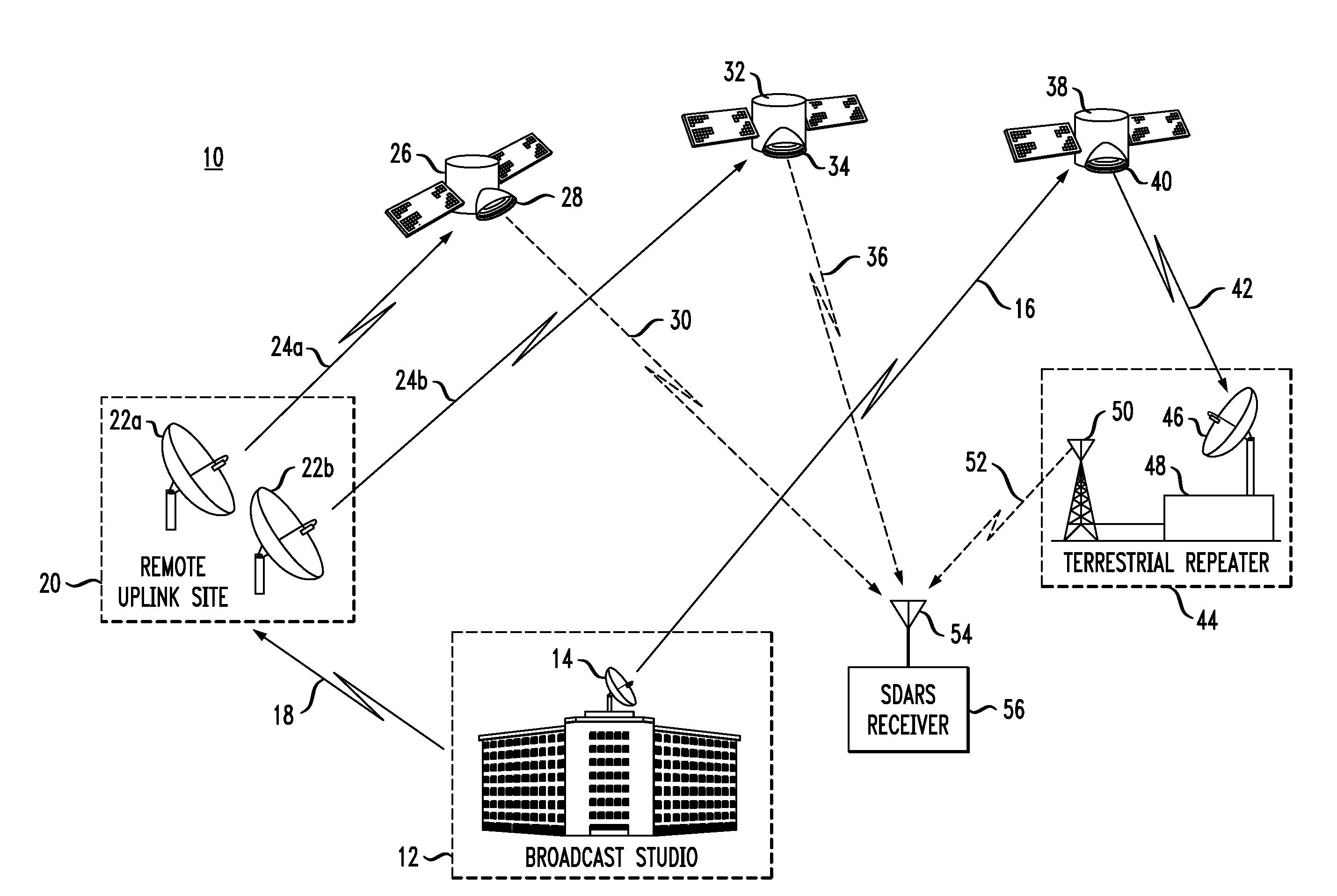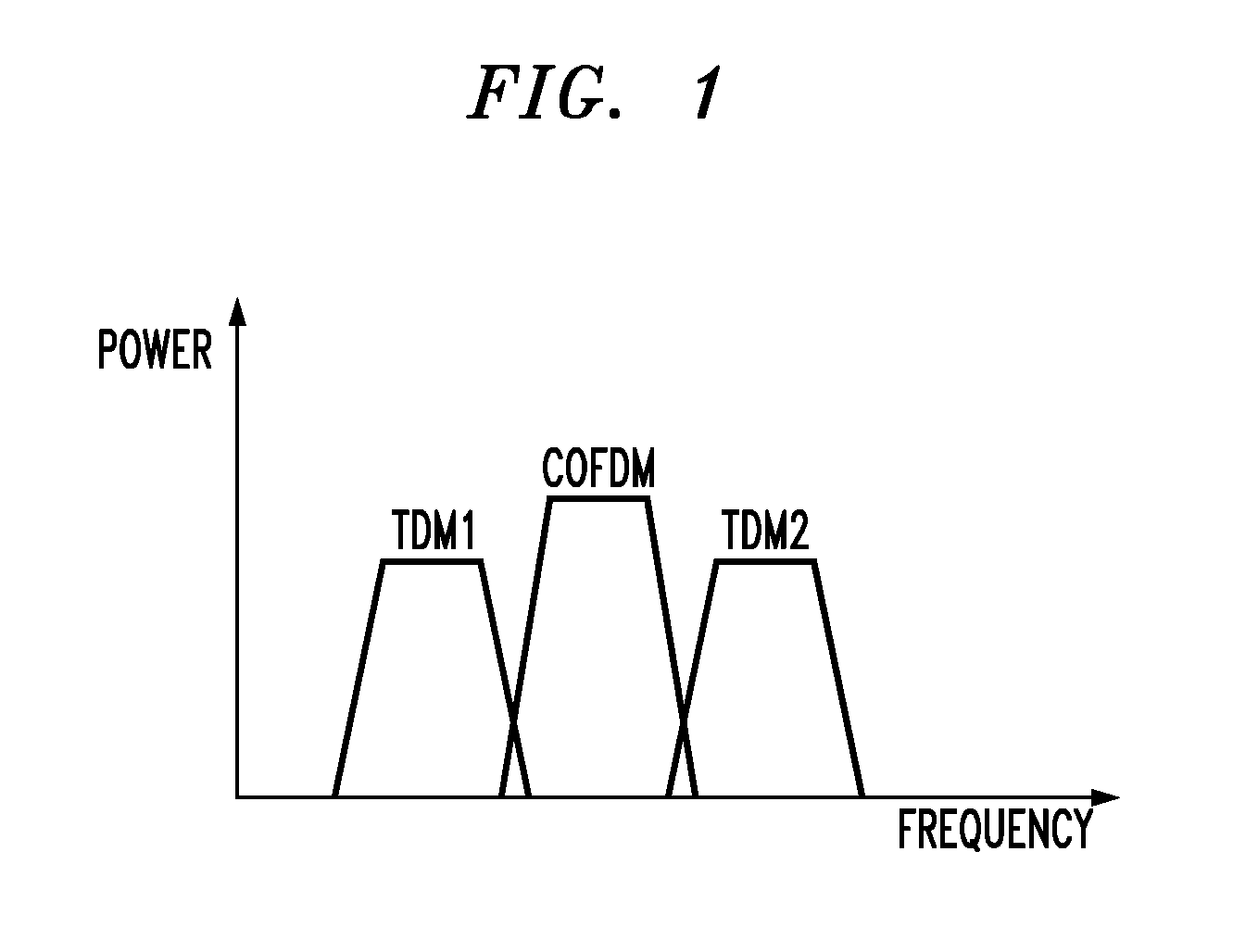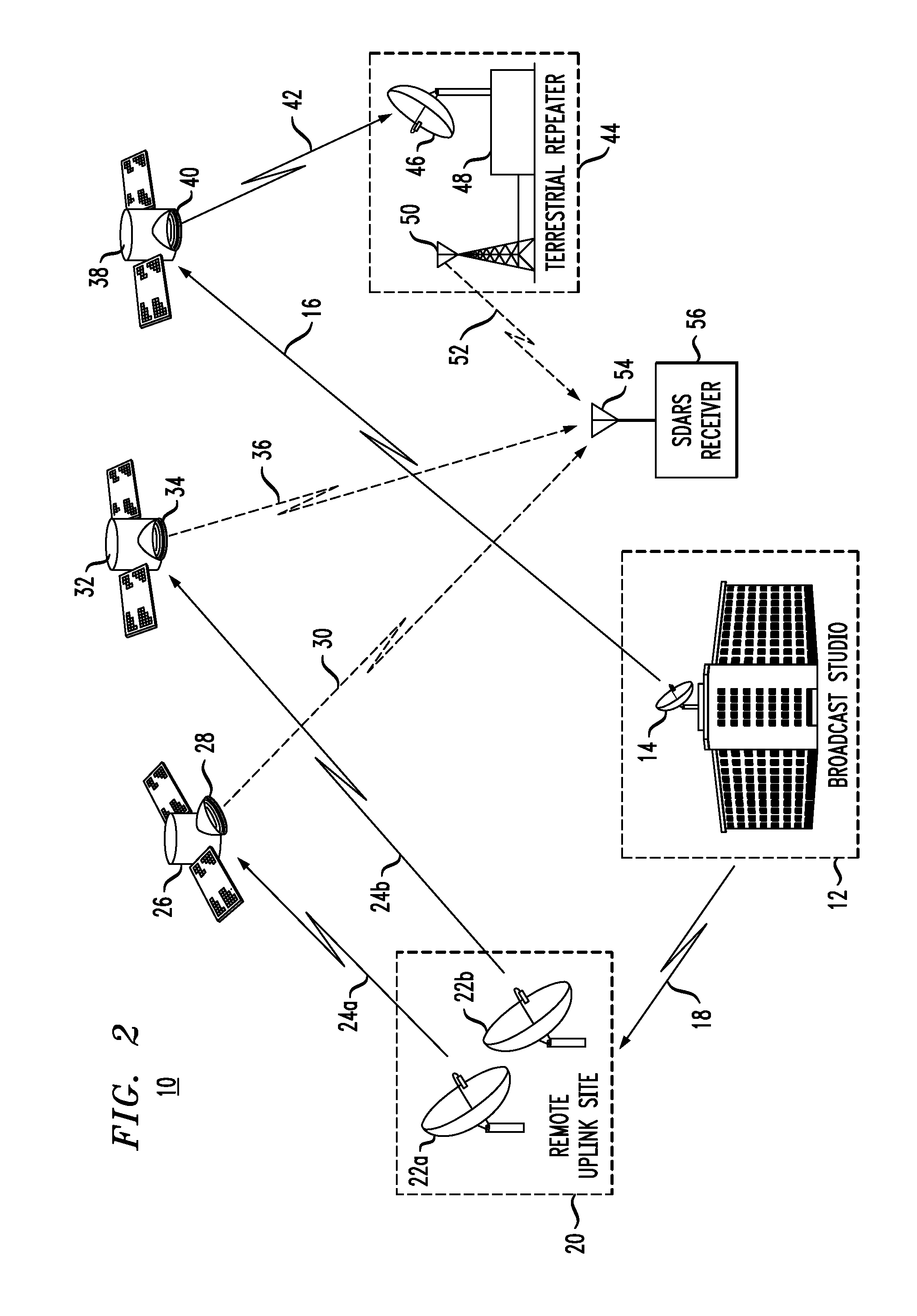Single path architecture with digital automatic gain control for sdars receivers
an automatic gain control and single path technology, applied in the direction of broadcast receiving circuits, broadcasts with distribution, transmission, etc., can solve the problems of affecting the consolidation process, affecting the quality of the signal, and the radio signal may be attenuated or distorted
- Summary
- Abstract
- Description
- Claims
- Application Information
AI Technical Summary
Benefits of technology
Problems solved by technology
Method used
Image
Examples
Embodiment Construction
[0031]Referring initially to FIG. 2, FIG. 2 is a highly schematic diagram of one embodiment of a Satellite Digital Audio Radio System, generally designated 10, incorporating an SDARS receiver 56 as described below in connection with FIGS. 4-7 according to the principles of the present invention. SDARS 10 includes an SDARS broadcast studio 12, a remote uplink site 20, first and second SDARS satellites 26, 32, a Very Small Aperture Terminal (VSAT) satellite 38 and a terrestrial repeater 44.
[0032]The SDARS broadcast studio 12 generates composite signals containing multiple audio and control channel signals. These composite signals are sent, via a remote transmission signal 18, to a remote uplink site 20 and via a remote transmission signal 16 to the VSAT satellite 38 via a VSAT uplink antenna 14. The remote uplink site 20 receives the remote transmission signal 18 and includes first and second satellite uplink antennas 22a, 22b to direct the SDARS broadcast to the first and second SDAR...
PUM
 Login to View More
Login to View More Abstract
Description
Claims
Application Information
 Login to View More
Login to View More - R&D
- Intellectual Property
- Life Sciences
- Materials
- Tech Scout
- Unparalleled Data Quality
- Higher Quality Content
- 60% Fewer Hallucinations
Browse by: Latest US Patents, China's latest patents, Technical Efficacy Thesaurus, Application Domain, Technology Topic, Popular Technical Reports.
© 2025 PatSnap. All rights reserved.Legal|Privacy policy|Modern Slavery Act Transparency Statement|Sitemap|About US| Contact US: help@patsnap.com



